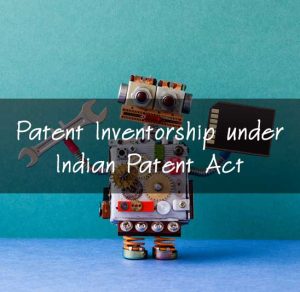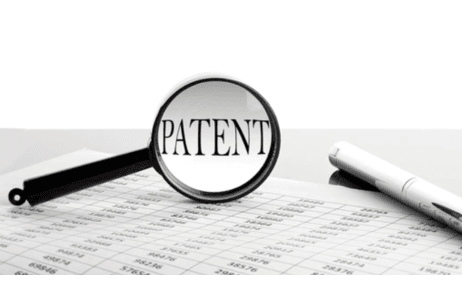Introduction In the realm of obtaining a patent right, conducting a ‘novelty search’ stands as…
Patent Inventorship under Indian Patent Act
The legal standard for inventorship is used to decide who can be identified as an inventor in a patent application. Inventorship is defined differently in different jurisdictions; in this blog, we’ll look at how it’s defined in Indian law.
Who qualifies as an inventor?

Importantly, the claims, not the whole disclosure, decide who the inventor of a patent is. As a result, a person is only considered an inventor if they assisted in the conception of something that is mentioned in at least one of the patent’s claims.
If there are several inventors from the same company or from various entities who have collaborated on the invention, determining inventorship becomes more difficult. During the case of the National Institute of Virology vs. Mrs. Vandana Bhide, the patent controller reached clear conclusions on the question of inventorship. Where it stated various factors while assessing an inventor which laid down that:
- If a person is to be called an inventor, he or she must have contributed intellectually to the final outcome of the scientific work that led to a patent.
- Further, it goes on to say that “an individual who has not contributed intellectually to the making of an invention is not qualified to be included as an inventor”.
An exploitable innovation is usually the result of a chain of cooperation in which each participant has contributed his or her ideas to the end result. As a result, identifying the true inventors is an important aspect of ensuring the invention’s property. This step is necessary to ensure that the inventor or any successor of right is correctly recognized in the patent application and can assert his rights, if applicable.
As per Section 6 (1) (a)[i] of the Patents Act, an application for a patent for any invention may only be submitted by the ‘true and first inventor’ of the invention or an assignee of the invention. A ‘patentee,’ as per Section 2(1) (p), is the “person” mentioned as the grantee or owner of the patent in the patent office registry. Logically, this means that the terms “inventor” and “person” would refer to a natural person. But Section 2(1) (s) of the Act, on the other hand, covers the government as a non-natural body. Furthermore, the term “true and first inventor” has an exclusivist meaning, as a natural person is not mentioned under Section 2(1) (y).
Nonetheless, an inventor mentioned as such in a patent application is legitimately assumed to be the true inventor if the controller is assured as stated in section 28[ii] that he or she is the true inventor, and the burden to revoke such a patent is laid down under section 25(1) (a) and section 25(2) (a) of the Act which states that “the applicant for the patent (or the patentee) or the person under or through whom he claims, wrongfully obtained the invention or any part thereof from him or from a person under or through whom he claims”. Furthermore, section 64(1) (b)[iii] states that the patent can be revoked on the grounds that it was awarded on the application of an individual who was not entitled to apply under the provisions of this Act. This provision, when read in accordance with section 6 of the Act, can be viewed in a way that requires the patent to be revoked in favor of the “true and first inventor.”
The intent of “true and first inventor”
The basic intent of the word “true and first inventor” can be seen in Unites States judgment of Heath v. Hildreth,[iv] where it was held that:
“If the invention be the mere speculation of a philosopher or mechanicians in his closet, and he takes no steps toward obtaining a patent but keeps his invention secret, and another person, who is also an original but subsequent inventor of the same thing, obtains a patent for it and brings it into use, it has been held, both in England and in this country, that the patentee in a suit at law is to be considered as the first inventor.”
So it can be understood that without disclosure, the word “true and first inventor” has no meaning since there is no profit to humanity as a whole because it’s as if the discovery never existed in the first place. As a consequence, merely getting an idea is useless.
As a result, the “true and first inventor” is not the first to discover, but the first to file, since the discovery is revealed to the public by filing. As a result, the first to register is also the first to invent.
Only the case where the work is acquired unlawfully from the individual challenging the award of a patent is covered under section 25[v] of the Act. In this regard precaution is in place for the “true and first inventor”.
Author: Siddhesh Birajdar – a 3rd-year student of the University of Mumbai, and intern at IIPRD. In case of any queries please contact/write back to us at [email protected].
References:
[i] The Patents Act, 1970, Section 6 (1) (a).
[ii] The Patents Act, 1970, Section 28.
[iii] The Patents Act, 1970, Section 64 (1) (b).
[iv] 11 F. Cas. 1003 (1841).
[v] The Patents Act, 1970, Section 25.



